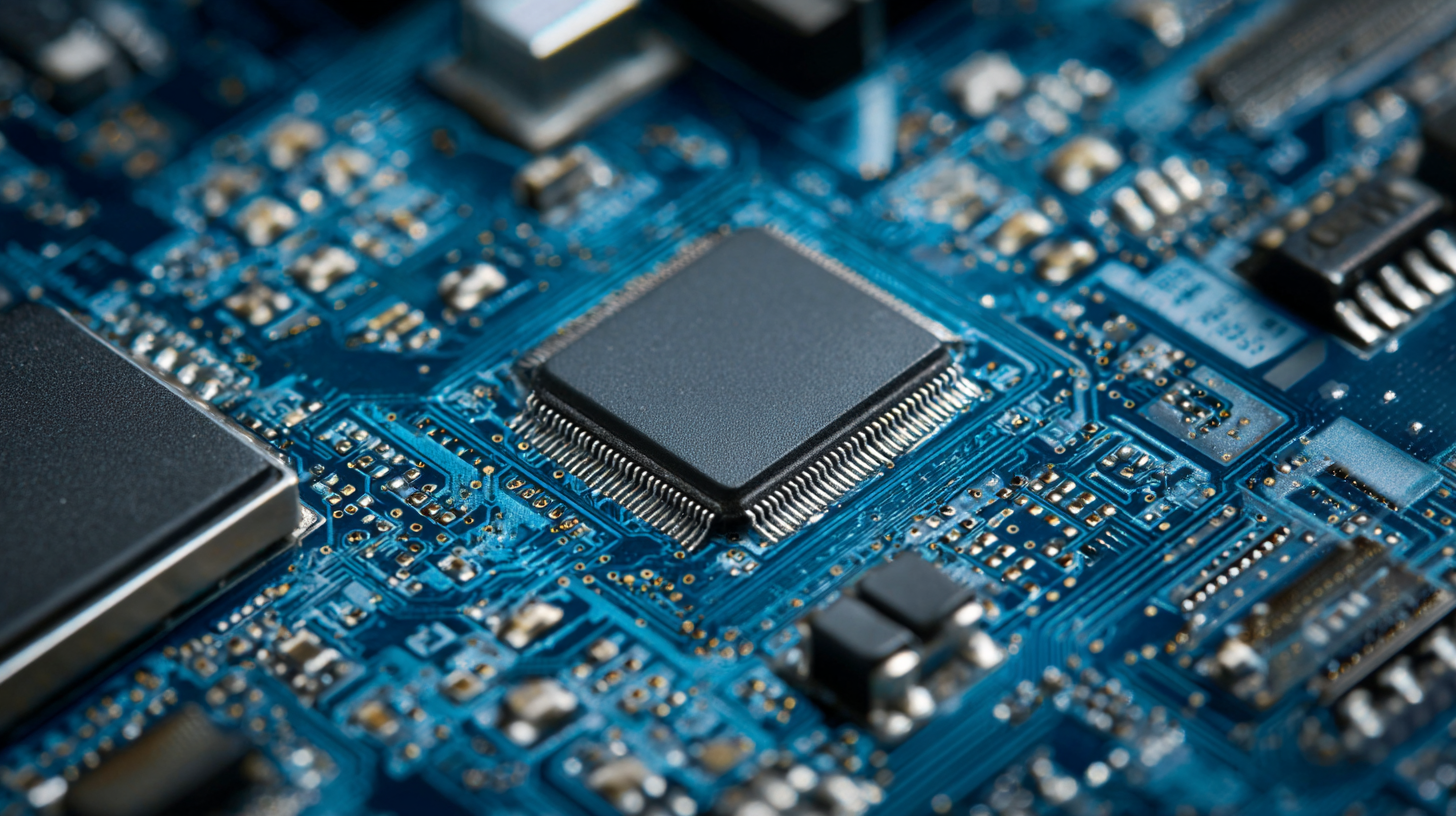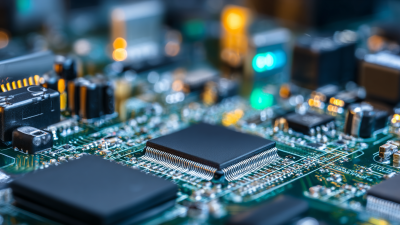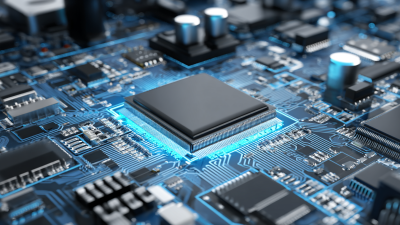The rapid evolution of electronics has necessitated the development of advanced PCB (Printed Circuit Board) technologies to meet the growing demands for high-frequency performance. As reported by the Research and Markets 2021 Global PCB Market Report, the PCB industry is projected to reach USD 88.67 billion by 2025, fueled by innovations in multi-layer and high-speed PCBs that enable faster data transfer rates and enhance overall device functionality. Advanced PCBs are now integral to applications ranging from telecommunications to consumer electronics, where the demand for compactness and performance is paramount.

Moreover, as the frequency of electronic signals continues to rise, the challenges associated with traditional PCB designs become more pronounced. A study by IPC – Association Connecting Electronics Industries highlights that up to 40% of PCB design issues stem from high-frequency signal integrity, which directly impacts product reliability and efficiency. Consequently, manufacturers are investing heavily in advanced PCB technologies such as embedded components, advanced materials, and design methodologies that not only improve performance but also reduce the size and weight of electronic devices. By exploring these innovative solutions, we can understand how advanced PCB technologies are revolutionizing the electronics landscape, paving the way for a smarter and more interconnected future.
The advancements in PCB materials are crucial for enhancing high-frequency applications, particularly in the realm of modern electronics where performance and efficiency are paramount. Recently, the exploration of diamond-based materials has shown promising potential due to their exceptional thermal conductivity, wide bandgap of 5.5 eV, and high breakdown electric field. These properties make diamond an ideal candidate for developing high-power and high-frequency electronic devices that can operate under extreme conditions with minimal power loss. As industries increasingly demand components that withstand higher temperatures and pressures, diamond's unique characteristics can support the next generation of high-frequency PCBs, driving innovation in various sectors, including telecommunications and aerospace.
Another noteworthy area of advancement involves gallium nitride (GaN) technology, which has been gaining traction in power electronics packaging. As the demand for devices operating in high-frequency, high-temperature, and high-voltage environments continues to rise—particularly in electric vehicles and high-speed trains—the limitations of traditional silicon-based power devices become evident. GaN offers superior efficiency and performance, making it a suitable alternative for high-frequency PCB applications. The integration of such advanced materials into PCB design not only enhances operational capabilities but also contributes significantly to the miniaturization of electronic devices, thereby revolutionizing the electronics landscape.

When designing high-frequency PCB layouts, several critical considerations must be taken into account to ensure optimal performance and signal integrity. One of the foremost factors is the choice of materials. High-frequency applications benefit from substrates with low dielectric loss and stable dielectric constants, such as Teflon or ceramic-based materials. These substrates help to reduce signal attenuation and maintain consistent impedance, which is vital for minimizing reflections and maximizing transmission efficiency.
Furthermore, the layout geometry plays a crucial role in high-frequency design. Engineers must focus on minimizing the loop areas of signal paths to reduce electromagnetic interference (EMI) and crosstalk. This can be achieved through careful placement of components and strategic routing of traces. Utilizing controlled impedance traces and implementing proper termination techniques are essential steps to ensure that the transmission line effects do not compromise signal quality. Additionally, ground plane considerations and via placements can significantly influence the performance of high-frequency circuits, requiring meticulous attention during the design process.

High-frequency performance plays a critical role in ensuring signal integrity within modern electronic systems. As designs reach increasingly high-speed operations, the ability to maintain signal integrity becomes paramount. Recent advancements in high-k In0.53Ga0.47As silicon-on-insulator FinFET technologies demonstrate enhanced radio frequency capabilities, indicating a shift towards materials that can better manage signal degradation caused by interference and parasitics. For instance, the shift to 22 nm graphene nano ribbon field effect transistors (GNRFETs) highlights a significant step in reducing power consumption while maximizing speed, showcasing how innovations are directly addressing signal integrity challenges.
Furthermore, the integration of sophisticated modeling techniques, such as scattering parameters-based circuit simulation, allows engineers to more accurately characterize impedance in both time and frequency domains. This approach is instrumental in evaluating how electromagnetic energy propagates through intricate interconnection systems, critically influencing performance metrics in high-speed applications. As challenges related to power integrity proliferate from package to PCB, understanding the complete system architecture becomes essential; neglecting these interdependencies can lead to significant signal integrity issues, ultimately hampering device performance. This convergence of high-frequency design, material science, and simulation techniques reflects a concerted effort within the industry to navigate the complex landscape of modern electronics.
In the rapidly advancing field of electronics, the implementation of advanced PCB technologies is crucial for optimizing high-frequency performance. Notable case studies illustrate how companies are leveraging these innovations to navigate the demands of modern applications. For instance, a prominent manufacturer recently adopted specialized PCB design strategies that significantly enhanced their product capabilities, aligning their output with the intricacies of emerging technologies such as artificial intelligence. This approach not only improved performance but also ensured greater reliability, which is critical in today’s competitive landscape.
**Tip:** When considering PCBs for high-frequency applications, focus on materials with low loss characteristics and understand the importance of impedance control in your designs.
Another case study highlights the strategic investments made in advanced processes that optimize the manufacturing of circuit boards, leading to increased sustainability and efficiency. As industries like mining begin to integrate these technologies, they find improved recovery rates and operational efficiencies.
**Tip:** Evaluate potential suppliers who have proven expertise in advanced manufacturing technologies to ensure your projects benefit from the latest innovations and best practices.
The evolution of high-frequency PCB technologies is transforming the landscape of electronics manufacturing, particularly as the demand for faster and more efficient devices continues to rise. Future trends indicate a significant push towards integrating advanced materials and innovative design approaches that enhance performance in communication technologies, automotive applications, and IoT devices. With the industry experiencing a steady growth rate projected at 5.8% annually by 2025 in Taiwan, companies are increasingly focusing on research and development to stay competitive.
Emerging startups are at the forefront of this revolution, with many targeting niche areas within high-frequency PCB applications. These startups are introducing novel techniques and materials aimed at optimizing signal integrity and reducing electromagnetic interference. As the market expands, businesses must adapt to these trends to leverage new opportunities and improve their product offerings, ensuring they remain relevant in a rapidly evolving technological landscape. The interplay between traditional manufacturing practices and cutting-edge innovations will likely shape the future of PCB development.
| Dimension | Description | Current Trends | Future Potential |
|---|---|---|---|
| Material Innovations | Use of new materials such as high-speed laminates and low-loss substrates. | Growing demand for lightweight and high-performance materials. | Expansion in aerospace and automotive applications. |
| Design Techniques | Advanced design techniques including multilayer PCB architecture. | Increase in the use of simulation and modeling tools. | Adaptive designs for 5G and IoT devices. |
| Thermal Management | Enhanced thermal conductivity materials to manage heat dissipation. | Focus on heat spreader designs and thermal vias. | Improved reliability and lifespan of high-frequency electronics. |
| Manufacturing Techniques | Use of additive manufacturing and new fabrication methods. | Automation in PCB assembly processes. | Cost-effective production for low-volume high-frequency applications. |






| Cookie | Duration | Description |
|---|---|---|
| cookielawinfo-checkbox-analytics | 11 months | This cookie is set by GDPR Cookie Consent plugin. The cookie is used to store the user consent for the cookies in the category "Analytics". |
| cookielawinfo-checkbox-functional | 11 months | The cookie is set by GDPR cookie consent to record the user consent for the cookies in the category "Functional". |
| cookielawinfo-checkbox-necessary | 11 months | This cookie is set by GDPR Cookie Consent plugin. The cookies is used to store the user consent for the cookies in the category "Necessary". |
| cookielawinfo-checkbox-others | 11 months | This cookie is set by GDPR Cookie Consent plugin. The cookie is used to store the user consent for the cookies in the category "Other. |
| cookielawinfo-checkbox-performance | 11 months | This cookie is set by GDPR Cookie Consent plugin. The cookie is used to store the user consent for the cookies in the category "Performance". |
| viewed_cookie_policy | 11 months | The cookie is set by the GDPR Cookie Consent plugin and is used to store whether or not user has consented to the use of cookies. It does not store any personal data. |